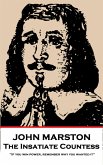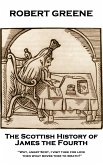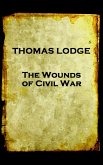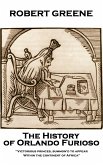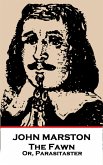Elizabeth Tanfield was born in 1585 or 1586 at Burford Priory in Oxfordshire, the only child of Sir Lawrence Tanfield and Elizabeth Symondes. Her father was a lawyer, who later became a judge and the Lord Chief Baron of the Exchequer. Her parents encouraged their daughter's love of reading and learning, although her mother forbade the servants from giving Elizabeth candles to read by at night.
At age five Elizabeth's parents employed a French teacher for her. Within weeks the young child was speaking fluently and would later instruct herself in Spanish, Italian, Latin, Hebrew, and Transylvanian. Her accomplishments as a scholar was acknowledged by such luminaries as Michael Drayton and John Davies in works they dedicated to her.
When she was fifteen, her father arranged for her to marry Sir Henry Cary (later Viscount Falkland). When she finally moved into her husband's home, she was told by her mother-in-law that she was forbidden to read. Unperturbed Elizabeth began to write poetry in her spare time.
After seven years of marriage the now Lord and Lady Falkland began their family; they would go on to have a total of eleven children.
Elizabeth believed that poetry was the highest literary form. Most of her poetry has been lost but evidence of her poetic talent can be seen in her surviving plays. Her play 'The Tragedy of Mariam, the Fair Queen of Jewry' (1613) was written in iambic pentameter with the use of couplets throughout and the use of irony. It was the first English play to be written by a woman.
In 1622 her husband was appointed Lord Deputy of Ireland and Elizabeth went with him to Dublin. There she socialized with prominent local Catholics and patronized Catholic writers.
In 1625 Elizabeth was disinherited by her father just before he died for using part of her jointure to meet the debts of her eldest son, Lucius and to help pay for her husband's lands in Ireland. The same year she returned from Ireland and publicly announced her conversion to Catholicism. This resulted in her husband's attempt (it was unsuccessful) to divorce her. Despite several orders of the Privy Council, he refused her a maintenance in an effort to force her to recant. He also denied her access to their children but she eventually gained custody over her daughters.
Elizabeth wrote 'The History of the Life, Reign, and Death of Edward II' in 1626/27. This was a political fable based on historical events. The story tells of King Edward II and his powerful favorites Gaveston and Spencer. The play is an analogy for King Charles, who in the 1620s was in conflict with Parliament about the power granted to the Duke of Buckingham. Elizabeth was in constant contact with Buckingham and his family and writing the play may have been her way to acknowledge his help and efforts.
Her husband died in 1633, and she sought to regain custody of her sons. It appeared she kidnapped them and was forced to appear before the Star Chamber to answer for this.
In 1634 her daughters Elizabeth, Mary, Lucy and Anne were accepted into the Catholic faith by John Fursdon, their mother's confessor. This was reported to King Charles I and he had the four girls removed from their mother's house and taken to Great Tew, which had been inherited by her son, Lucius, and now the new Viscount Falkland.
By the end of Elizabeth's life her mission to convert her children to Catholicism had become partially successful; four of her daughters went on to become Benedictine nuns, and one of her sons joined the priesthood.
In 1639, Elizabeth Cary, Lady Falkland died in London. She is buried in Henrietta Maria's Chapel in Somerset House.
At age five Elizabeth's parents employed a French teacher for her. Within weeks the young child was speaking fluently and would later instruct herself in Spanish, Italian, Latin, Hebrew, and Transylvanian. Her accomplishments as a scholar was acknowledged by such luminaries as Michael Drayton and John Davies in works they dedicated to her.
When she was fifteen, her father arranged for her to marry Sir Henry Cary (later Viscount Falkland). When she finally moved into her husband's home, she was told by her mother-in-law that she was forbidden to read. Unperturbed Elizabeth began to write poetry in her spare time.
After seven years of marriage the now Lord and Lady Falkland began their family; they would go on to have a total of eleven children.
Elizabeth believed that poetry was the highest literary form. Most of her poetry has been lost but evidence of her poetic talent can be seen in her surviving plays. Her play 'The Tragedy of Mariam, the Fair Queen of Jewry' (1613) was written in iambic pentameter with the use of couplets throughout and the use of irony. It was the first English play to be written by a woman.
In 1622 her husband was appointed Lord Deputy of Ireland and Elizabeth went with him to Dublin. There she socialized with prominent local Catholics and patronized Catholic writers.
In 1625 Elizabeth was disinherited by her father just before he died for using part of her jointure to meet the debts of her eldest son, Lucius and to help pay for her husband's lands in Ireland. The same year she returned from Ireland and publicly announced her conversion to Catholicism. This resulted in her husband's attempt (it was unsuccessful) to divorce her. Despite several orders of the Privy Council, he refused her a maintenance in an effort to force her to recant. He also denied her access to their children but she eventually gained custody over her daughters.
Elizabeth wrote 'The History of the Life, Reign, and Death of Edward II' in 1626/27. This was a political fable based on historical events. The story tells of King Edward II and his powerful favorites Gaveston and Spencer. The play is an analogy for King Charles, who in the 1620s was in conflict with Parliament about the power granted to the Duke of Buckingham. Elizabeth was in constant contact with Buckingham and his family and writing the play may have been her way to acknowledge his help and efforts.
Her husband died in 1633, and she sought to regain custody of her sons. It appeared she kidnapped them and was forced to appear before the Star Chamber to answer for this.
In 1634 her daughters Elizabeth, Mary, Lucy and Anne were accepted into the Catholic faith by John Fursdon, their mother's confessor. This was reported to King Charles I and he had the four girls removed from their mother's house and taken to Great Tew, which had been inherited by her son, Lucius, and now the new Viscount Falkland.
By the end of Elizabeth's life her mission to convert her children to Catholicism had become partially successful; four of her daughters went on to become Benedictine nuns, and one of her sons joined the priesthood.
In 1639, Elizabeth Cary, Lady Falkland died in London. She is buried in Henrietta Maria's Chapel in Somerset House.
Dieser Download kann aus rechtlichen Gründen nur mit Rechnungsadresse in D ausgeliefert werden.



